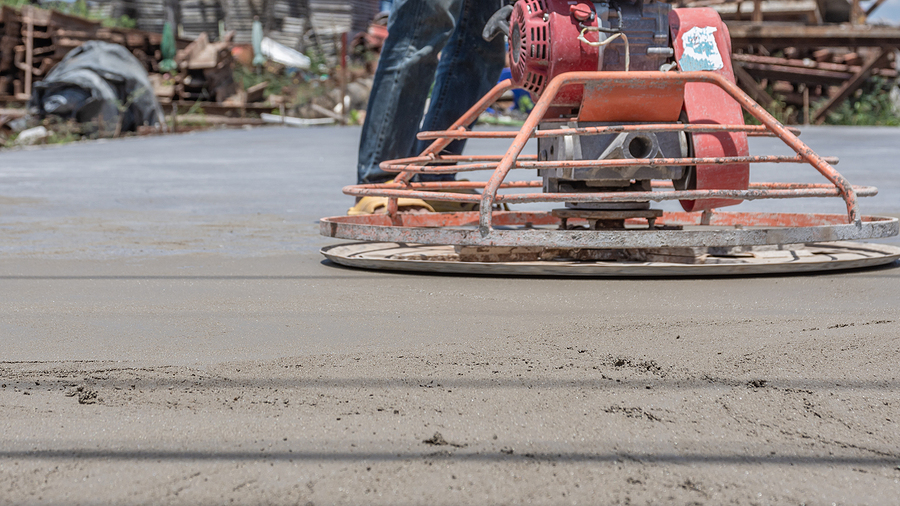When you see towering skyscrapers, expansive highways, or sturdy bridges, you’re witnessing the remarkable durability of ready-mix concrete in action. This versatile building material has become the backbone of modern construction, but what exactly makes it so incredibly strong and long-lasting?
Ready mix concrete isn’t just a simple mixture of materials thrown together. Its exceptional durability stems from a precise scientific process involving carefully balanced ingredients, complex chemical reactions, and rigorous quality control measures. Understanding the science behind ready-mix concrete durability reveals why this material can withstand decades of wear, weather, and stress while maintaining its structural integrity.
The durability of ready-mix concrete depends on several interconnected factors, from the initial composition to the final curing process. Each element plays a crucial role in creating a material that can support massive loads, resist environmental damage, and provide reliable performance for generations.

Composition of Ready-Mix Concrete: The Foundation of Strength
The durability of ready mix concrete begins with its fundamental composition. This engineered material consists of four primary components, each serving a specific purpose in creating a durable final product.
Cement acts as the binding agent, typically Portland cement, which provides the chemical foundation for the concrete’s strength. When cement comes into contact with water, it initiates the crucial hydration process that transforms the mixture from a workable material into a rock-hard substance.
Aggregates make up the largest portion of concrete volume, including both fine aggregates (sand) and coarse aggregates (gravel or crushed stone). These inert materials provide structural volume and significantly contribute to the concrete’s overall strength and durability characteristics.
Water serves as more than just a mixing agent. It’s the catalyst that activates the cement, enabling the chemical reactions necessary for hardening. The quality and quantity of water directly impact the final strength and durability of the concrete.
Admixtures are specialized chemicals added to modify specific properties of the concrete. These can include air-entraining agents to improve freeze-thaw resistance, water reducers to enhance workability, or accelerators to speed up the setting process.
The Hydration Process: Chemistry in Action
At the heart of ready-mix concrete durability lies hydration—the chemical reaction between cement and water that transforms the mixture into a solid, durable material. This process begins immediately when water contacts cement particles.
During hydration, cement compounds react with water to form calcium silicate hydrate (C-S-H) gel, which acts as the primary binding agent. This gel fills the spaces between cement particles and aggregates, creating a dense, interconnected matrix that gives concrete its strength.
The hydration process continues for months, even years, after the concrete is placed. This ongoing reaction means that properly cured concrete actually becomes stronger over time, contributing significantly to its long-term durability.
Temperature and moisture levels critically influence the hydration rate. Higher temperatures accelerate the process, while adequate moisture ensures complete hydration of cement particles, maximizing the concrete’s potential strength and durability.
Role of Aggregates in Concrete Strength
Aggregates aren’t just filler material—they’re integral to ready-mix concrete durability. Different types and sizes of aggregates affect the concrete’s strength, workability, and resistance to various stresses.
▶ Fine aggregates (sand) fill voids between larger particles and contribute to the concrete’s workability. The gradation and quality of fine aggregates influence the concrete’s ability to achieve a dense, durable matrix.
▶ Coarse aggregates (gravel or crushed stone) provide the structural backbone of concrete. Their size, shape, and strength characteristics directly impact the concrete’s ability to resist compressive forces and maintain long-term durability.
The aggregate-to-cement ratio affects both strength and durability. Well-graded aggregates create a denser concrete matrix with fewer voids, resulting in higher strength and better resistance to water penetration and chemical attack.
View Our RMC Delivery Solutions!
Water-Cement Ratio: The Critical Balance
The water-cement ratio represents one of the most crucial factors in ready-mix concrete durability. This ratio, measured by weight, determines the concrete’s ultimate strength, durability, and workability characteristics.
A lower water-cement ratio produces stronger, more durable concrete. When less water is used, fewer voids remain after hydration, creating a denser concrete matrix that better resists compression, water penetration, and chemical attack.
However, reducing water content affects workability. Too little water makes the concrete difficult to place and compact properly, potentially creating weak spots that compromise durability. The optimal ratio balances strength requirements with practical workability needs.
Excess water creates additional voids as it evaporates, weakening the concrete structure and reducing its resistance to environmental factors. These voids provide pathways for water and chemicals to penetrate the concrete, accelerating deterioration processes.
Impact of Admixtures on Concrete Properties
Modern ready mix concrete often includes various admixtures that enhance specific durability characteristics. These chemical additives allow concrete producers to tailor the material’s properties to meet specific project requirements.
Air-entraining agents create tiny air bubbles throughout the concrete, improving its resistance to freeze-thaw cycles. This is particularly important for concrete paving and other applications exposed to seasonal temperature variations.
Water-reducing admixtures (plasticizers) allow for lower water-cement ratios while maintaining workability, resulting in stronger, more durable concrete. Super-plasticizers can achieve even greater water reduction and strength enhancement.
Set-controlling admixtures help manage the concrete’s setting time. Accelerators speed up hydration for faster strength gain, while retarders slow the process, allowing for better placement in large pours or hot weather conditions.
Supplementary cementitious materials like fly ash or silica fume can partially replace cement, often improving long-term durability by creating a denser concrete matrix and reducing permeability.
Curing Process: Nurturing Strength Development
Proper curing is essential for achieving the full durability potential of ready-mix concrete. Curing involves maintaining adequate moisture and temperature conditions to allow complete hydration of cement particles.
Moisture is critical because hydration requires water. If concrete dries too quickly, hydration stops prematurely, resulting in lower strength and reduced durability. Proper curing maintains surface moisture for at least seven days, with 28 days being optimal for maximum strength development.
Temperature control during curing affects the rate and completeness of hydration. Moderate temperatures (50-80°F) provide ideal conditions for strength development. Extreme temperatures, either hot or cold, can negatively impact the curing process and final concrete quality.
Different curing methods include water curing, membrane curing with curing compounds, and steam curing for precast applications. The chosen method depends on project requirements, environmental conditions, and desired strength development timeline.
Contact Us for Expert Commercial Concrete Paving
Testing and Quality Control Measures
Ensuring ready-mix concrete durability requires rigorous testing and quality control throughout the production and placement process. These measures verify that the concrete meets specified strength and durability requirements.
Compressive strength testing involves crushing concrete cylinders to determine their resistance to compression, typically measured at 7, 14, and 28 days after placement. This fundamental test indicates the concrete’s structural capacity and overall quality.
Slump testing measures concrete workability and consistency. While not directly measuring durability, proper workability ensures adequate placement and consolidation, which are essential for achieving design strength and durability.
Air content testing verifies proper air entrainment levels for freeze-thaw resistance. This is particularly important for concrete installation in climates with seasonal freezing.
Temperature monitoring ensures concrete is placed within specified temperature ranges and that proper curing temperatures are maintained during critical early-age strength development.
Factors Affecting Long-Term Durability
Several external factors can impact the long-term performance of ready-mix concrete, even when properly designed and installed. Understanding these factors helps ensure optimal durability for specific applications.
Climate conditions significantly affect concrete durability. Freeze-thaw cycles can cause internal cracking if the concrete lacks adequate air entrainment. Hot, dry climates may cause rapid moisture loss during placement, while humid conditions can affect curing processes.
Chemical exposure from deicing salts, sulfates in soil, or industrial chemicals can deteriorate concrete over time. The concrete’s permeability and chemical resistance determine its ability to withstand such exposure.
Physical stress from traffic loads, structural movements, or ground settlement can cause cracking and reduce durability. Proper design considers these factors to ensure adequate strength and reinforcement.
Water exposure is particularly critical for concrete paving and other exterior applications. Proper mix design includes consideration of water penetration resistance and potential freeze-thaw damage.
Cement vs. Concrete: Understanding the Difference
Many people confuse cement and concrete, but understanding the difference is crucial for appreciating ready-mix concrete durability. Cement is just one component of concrete—the binding agent that holds everything together.
Concrete is the composite material created when cement, aggregates, water, and admixtures combine and undergo hydration. The strength and durability come from this complete system, not from cement alone.
This distinction is important because concrete’s durability depends on all components working together. High-quality cement won’t produce durable concrete without proper aggregates, water control, and curing practices.
Maximizing Your Concrete Investment
Understanding the science behind ready-mix concrete durability empowers you to make informed decisions for your construction projects. The key lies in recognizing that durability results from the careful orchestration of multiple factors—from initial mix design through final curing.
Quality ready mix concrete delivery ensures your project starts with properly proportioned materials and expert knowledge. Professional concrete installation follows proven practices for placement, finishing, and curing to achieve maximum durability potential.
Whether you’re planning a commercial concrete paving project or any concrete installation, partnering with experienced professionals who understand these scientific principles ensures your investment will provide decades of reliable performance.
Ready to build with confidence? Contact ACI Asphalt and Concrete for small or large batch RMC delivery in Central Indiana and experience the difference that scientific precision and professional expertise make in concrete durability. Our team combines advanced materials science with proven construction practices to deliver ready-mix concrete solutions that stand the test of time.
Related Post: The Advantages of Using Ready Mix Concrete for Commercial Construction









